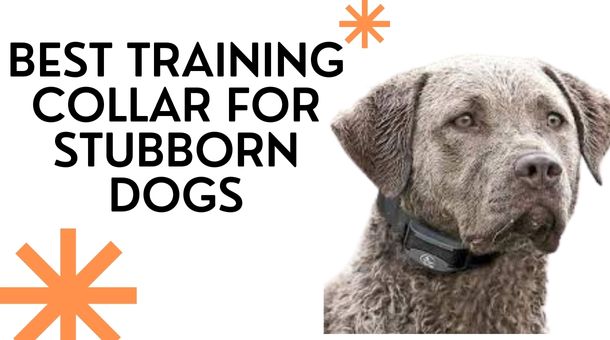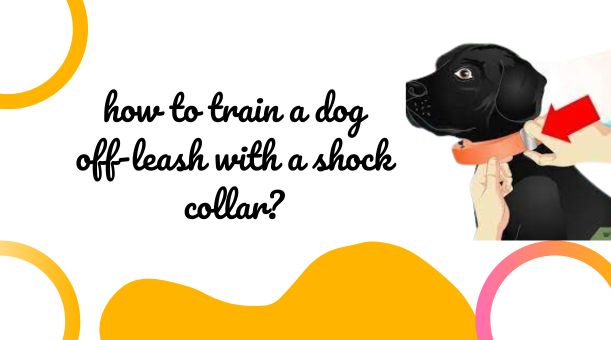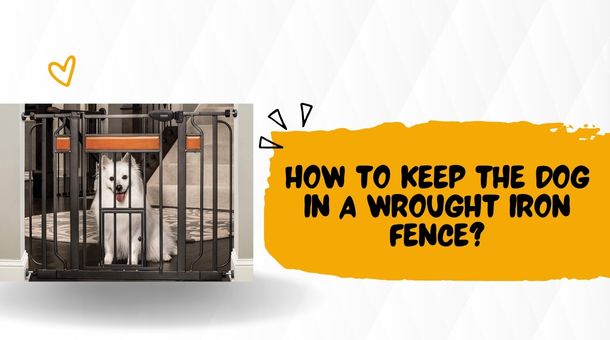Training a stubborn dog can be challenging, but the right training collar can make all the difference. In this article, we’ll explore the best training collars for stubborn dogs and provide tips on choosing the right one for your furry friend.
We’ll also cover important considerations, such as the potential risks of using training collars, how to properly use them, and alternative training methods. By the end of this article, you’ll better understand how to effectively and safely train your stubborn dog.
Best training collar for stubborn dogs:
Choosing the right training collar can be crucial for success when training a stubborn dog. Here are some of the best training collars for stubborn dogs:
Martingale Collar
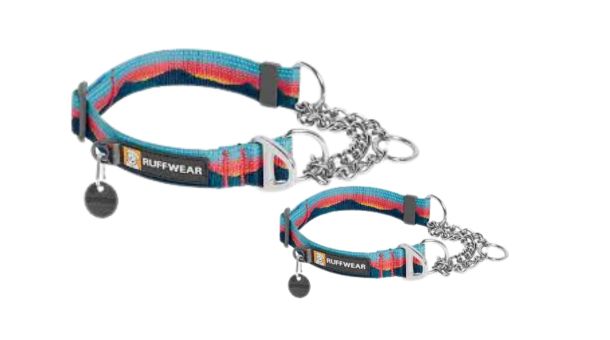
A martingale collar, a limited-slip collar, is popular for stubborn dogs. It is designed to gently tighten around the dog’s neck when they pull, correcting without choking or causing harm. Martingale collars are particularly useful for dogs with narrow heads or those prone to slipping out of traditional collars.
Prong Collar
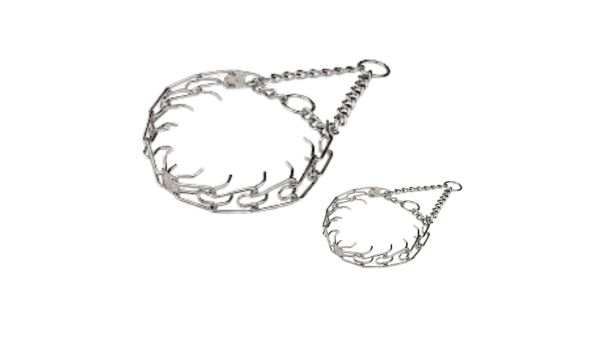
A prong or pinch collar is controversial but effective for some stubborn dogs. It is designed with metal prongs that pinch the dog’s neck when they pull, correcting. However, it is important to use a prong collar properly and avoid causing injury or discomfort to the dog.
Head Collar
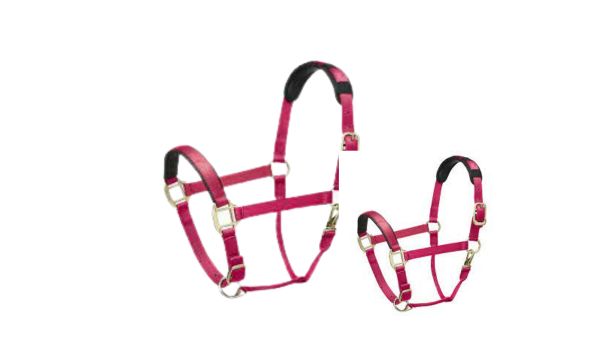
A head collar, such as the popular brand “Gentle Leader,” is designed to fit over the dog’s nose and head. It provides more control and can prevent pulling without causing harm or discomfort. However, some dogs may not take well to the sensation of having something on their face and may need to gradually acclimate to the head collar.
E-Collar
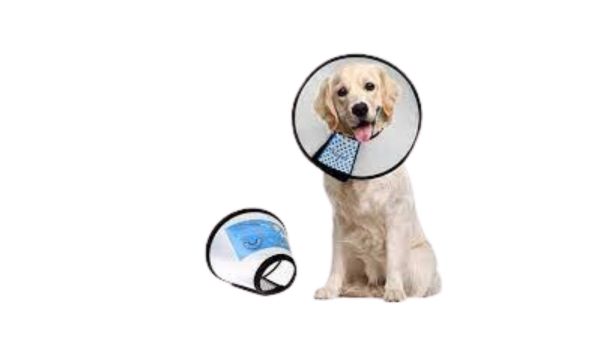
An electronic collar, also known as a shock collar, is a controversial option and should only be used as a last resort. When activated, it emits a mild electric shock to the dog’s neck, correcting. However, it is important to use an e-collar properly and avoid causing injury or trauma to the dog.
How do I properly use a training collar for my stubborn dog?
Proper usage of a training collar is essential for the effective and humane training of a stubborn dog. Here are some tips on how to properly use a training collar:
Ensure the collar fits snugly but not tightly around your dog’s neck. It should be loose enough to allow for comfortable breathing but not so loose that it slips over the dog’s head. Consult the instructions or a professional trainer for guidance on fitting your specific type of collar.
A training collar should not be the only tool for training a stubborn dog. Positive reinforcement, such as praise and treats, should reward good behavior. The collar should redirect unwanted behavior, not as a punishment.
Using a prong collar or e-collar, start with the lowest intensity setting and gradually increase as needed. The goal is to provide a correction that gets the dog’s attention, not to cause pain or discomfort.
When using the collar, such as “heel” or “stop.” The dog should learn to associate the command with the correction provided by the collar.
The dog should not wear a training collar all day or for extended periods. It should only be used during training sessions and removed when not in use.
Keep an eye on your dog’s behavior when using the collar. If they seem distressed, anxious, or in pain, stop using the collar immediately and consult a professional trainer or veterinarian.
Remember, training collars are tools, not a replacement for proper training and positive reinforcement. They should be used responsibly and with the dog’s well-being in mind.
How do I choose the right training collar for my stubborn dog?

Choosing the right training collar for your stubborn dog can be overwhelming, with many options. Here are some tips to help you choose the right training collar:
- It’s always best to consult a professional dog trainer or veterinarian before choosing a training collar. They can assess your dog’s behavior and recommend the best collar for your dog’s individual needs.
- Different collars are designed for different dog sizes and breeds. For example, a prong collar may be too harsh for a small dog, while a martingale collar may not be effective for a large, strong breed.
- Consider the design and features of the collar. Does it fit comfortably? Is it adjustable for a customized fit? Is it durable and well-made? These are all important factors to consider when choosing a collar.
- Consider the type of correction the collar provides. Some collars provide a gentle, limited correction, while others provide a stronger, more aversive correction. Choose the appropriate correction based on your dog’s behavior and personality.
- Safety should always be a top priority when choosing a training collar. Avoid collars that may cause harm, such as choke collars, and opt for collars designed to correct without causing injury or discomfort.
- Consider your training goals and how the collar fits your overall training plan. A head collar may be a good option if you’re looking for a collar to provide additional control during walks. If you’re looking for a collar to correct excessive barking, an e-collar may be more appropriate.
Can training collars be harmful to my dog?
When used improperly or inappropriately, training collars can harm dogs. Here are some potential risks associated with using training collars:
- Physical injury
- Psychological harm
- Skin irritation
- Loss of trust
- Ineffective training
How long should I use a training collar on my stubborn dog?
The time you should use a training collar on your stubborn dog depends on the individual dog and the type of collar used. Generally, a training collar should only be used during training sessions and not worn continuously.
It’s important to note that a training collar should not be used as a permanent solution to a behavior problem. Rather, it should redirect unwanted behavior and promote positive training.
Once your dog has learned the desired behavior, the collar should be gradually phased out. This can be done by using the collar less frequently, decreasing the intensity of the correction, or switching to a less aversive collar.
It’s also important to reinforce good behavior using positive reinforcement, such as praise and treats. This will help your dog understand the expected behavior and reinforce the desired behavior.
The length of time that you use a training collar on your dog should be determined in consultation with a professional trainer or veterinarian, who can assess your dog’s individual needs and behavior.
How can I train my stubborn dog without using a collar?
There are many effective training methods to train a stubborn dog that does not involve using a collar. Here are some tips:
- Use reinforcement techniques such as treats, praise, and toys to reward your dog’s good behavior.
- Be consistent in your training methods and use the same commands and rewards.
- Be patient with your dog; do not get frustrated if he does not immediately respond to your commands.
- Ensure your dog gets plenty of exercise and mental stimulation, which can help reduce unwanted behavior.
- Manage your dog’s environment to prevent him from engaging in unwanted behavior. For example, if your dog is destructive when left alone, crate him when you are not home.
- Clicker training is a positive reinforcement method that uses a clicker to mark the desired behavior and reward the dog with treats.
- Consider enrolling your dog in training classes or working with a professional trainer to develop an effective training plan.
Common mistakes to avoid when using a training collar for a stubborn dog?
Here are some common mistakes to avoid when using a training collar for a stubborn dog:
- Using the wrong type of collar
- Using the wrong correction level
- Using the collar as punishment
- Inconsistency
- Overusing the collar
- Not seeking professional advice
Conclusion
Training a stubborn dog can be challenging, but using a training collar can be effective when used correctly. Choosing the right type of collar is important, as using the correct correction level and avoiding using it as a punishment or too frequently.
Consistency and patience are key when training your dog, and positive reinforcement techniques should be used whenever possible. However, it’s also important to remember that training collars may not be appropriate for all dogs, and seeking professional advice from a veterinarian or trainer is always a good idea
By following these guidelines and being mindful of your dog’s well-being, you can effectively train your stubborn dog while maintaining a humane and positive training experience.

